RHSOC for Region b
The Missouri Office of Homeland Security was established on September 26, 2001 with Missouri being the first state in the nation to create an Office of Homeland Security in response to the terrorist attacks of September 11, 2001.
Local communities are focused and engaged in Missouri's homeland security program through the establishment of nine regional advisory groups, called Regional Homeland Security Oversight Committees (RHSOCs). RHSOCs fall under the governance structure of the Homeland Security Advisory Council.
Executive Order 05-20 was signed on July 21, 2005, moving the Missouri Office of Homeland Security to the Missouri Department of Public Safety.
In 2006, the State of Missouri established eleven Regional Homeland Security Oversight Committees (RHSOCs) in the State for the purpose of developing regionally focused Homeland Security programs.
The Region B RHSOC includes the counties of Adair, Chariton, Clark, Knox, Lewis, Linn, Macon, Marion, Monroe, Putnam, Ralls, Randolph, Schuyler, Scotland, Shelby and Sullivan.
The Mark Twain Regional COG serves as the Lead Regional Planning Commission for Region B RHSOC. As a result, the Council serves as the fiscal agent and oversees the day to day operations of the Committee.
The Region B RHSOC is comprised of fifteen individual disciplines, each having a primary and alternate representative. The Committee’s primary goal is to make critical decisions on how to expend localized grant funding and to insure that these decisions are made on a regional level, improve working relationships among regional emergency managers, develop local leadership capabilities and expand the number of disciplines that participate in the field of emergency management. The Region B RHSOC meets quarterly.
Proactive efforts of the Region B RHSOC have directly benefited the citizens in the sixteen county region. The Region B RHSOC has provided representation on a number of state committees, provided training for agricultural risk mitigation and funded updates to critical mapping data for 911 Centers.
You will need to obtain a tool such as Adobe Reader to download the file below, it's a free download.
Region B 2025 WCIF
The Threat and Hazard Identification and Risk Assessment (THIRA)/Stakeholder Preparedness Review (SPR) Whole Community Input Form is designed to help communities complete their THIRA/SPR process, as outlined in the Comprehensive Preparedness Guide (CPG) 201, Third Edition. Communities can use this tool to collect THIRA/SPR data from their stakeholders, including regional, county, and local governments, other government agencies, and private sector partners. This tool includes all of the standardized impacts and standardized target language that communities will use in their THIRA/SPRs in 2022. Communities may also find this tool useful for becoming more familiar with the methodology.
Region B RHSOC Discipline Representatives
(as of October 14, 2025)
Chairman: Mike Kindle, Macon County 911
Vice Chairman: Erick Byrn, Scotland County Ambulance District
| Name | Affiliation | Discipline |
| Scott Williamson | Kirksville Police Department | Municipal Police |
| Erick Byrn | Scotland County Ambulance District | Emergency Services |
| Branson Wells | NEMO 911 | 911 | David Lomax | Marion County | County Commissioners | Kevin Buckallew | Schyler County | Emergency Mgmt. Directors |
| Travis Gregory | Kirksville Fire Department | Fire |
| Kathryn Magers | Schuyler County Health Department | Health |
| Shawn Smith | Hannibal Fire Department | Homeland Regional Response Teams |
| Darrell McCoy | City of Hannibal | Mayor/City Administrator |
| Dennie Carothers | City of Clarence | Public Works |
| Arron Fredrickson | Shelby County Sheriff's Office | Sheriff |
| Toby Seifert | Liberty Utilities | Utility |
| John Dungan | American Red Cross | Volunteers |
| Jerry Harland | Hannibal Regional Hospital | Hospitals |
| Michele Collins | South Shelby School District | Schools |
Region B RHSOC Inventory
2025 Region B Inventory - All 16 Counties
*Region B inventory is currently undergoing an update (October 2025)
Equipment Dispositions-
Helpful Links
Missouri Office of Homeland Security
Missouri's Homeland Security Program Overview
Grants.com - Government Grant Solutions
Federal Emergency Management Agency (FEMA)
Federal Homeland Security
DNR - Missouri Department of Natural Resources
SEMA - Missouri State Emergency Management Agency
DHSS - Missouri Department of Health & Senior Services
MSHP - Missouri State Highway Patrol

